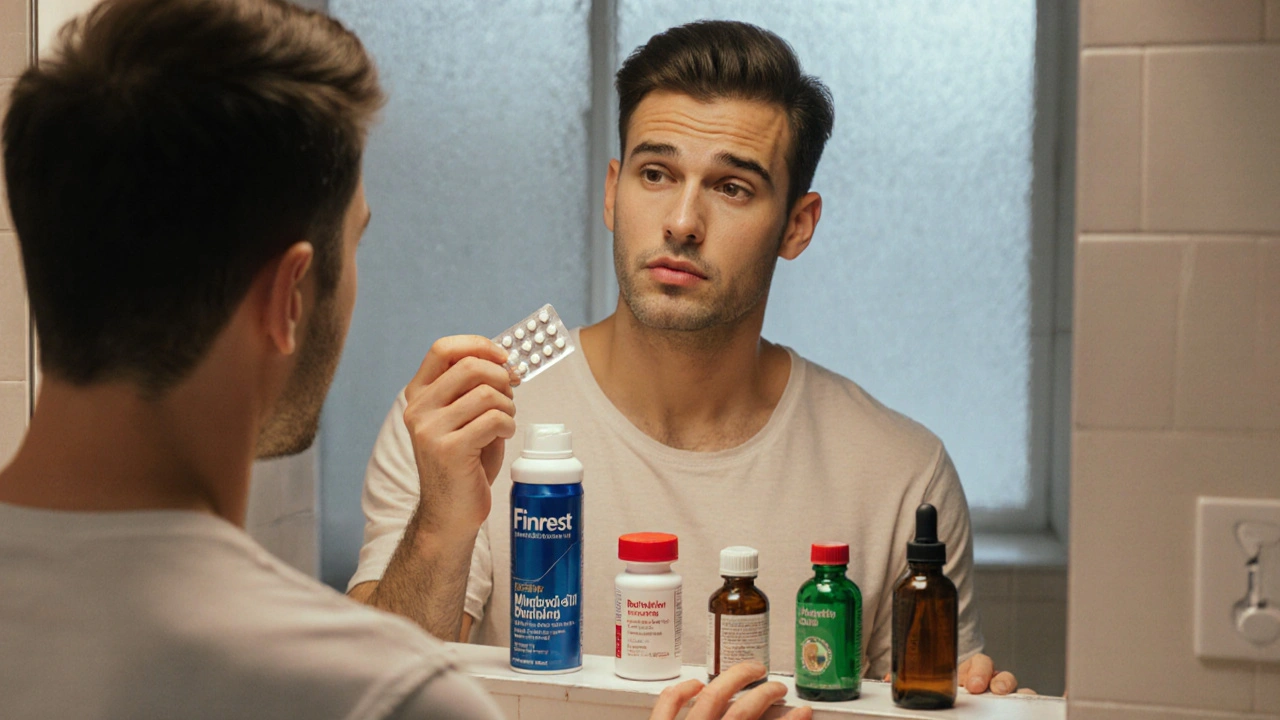Best Hair Loss Medication – Find What Works for You
When talking about Hair loss medication, any drug designed to slow, halt, or reverse thinning of the scalp. Also known as hair loss treatment, it is a cornerstone for people dealing with pattern baldness or diffuse thinning. The field revolves around a few key players: Finasteride, Minoxidil, Dutasteride and Spironolactone. These agents each target a different part of the hair‑growth cycle, and together they shape the landscape of modern hair restoration.
Key Factors to Consider When Choosing a Treatment
First, understand the mechanism of action. Finasteride blocks the conversion of testosterone to dihydrotestosterone (DHT), the hormone that shrinks hair follicles in androgen‑dependent loss. Minoxidil works from the outside, widening blood vessels to improve follicle nutrition and extend the growth phase. Dutasteride is a stronger DHT inhibitor, often reserved for cases where finasteride falls short. Spironolactone acts as an anti‑androgen, making it useful for women who experience hormonal hair shedding. The choice depends on gender, age, medical history and how aggressive the loss is.
Second, safety and side‑effects matter. Oral DHT blockers can cause sexual dysfunction, mood changes, or hormonal shifts, so a doctor's baseline labs are essential. Topical minoxidil is usually well‑tolerated, but scalp irritation or unwanted facial hair can happen. Knowing the risk profile helps you weigh short‑term discomfort against long‑term regrowth. Third, cost and convenience play a big role. Finasteride and minoxidil are widely available as generics, keeping prices low, while dutasteride and spironolactone may require specialty prescriptions. Insurance coverage varies, so checking pharmacy benefits early can prevent surprise bills.
Fourth, treatment duration influences results. Hair cycles are slow; most users see noticeable thickening after 3–6 months of consistent use, and full benefits may take a year. Stopping a medication often leads to a rapid return of loss, especially with DHT blockers. This makes adherence a critical piece of the puzzle. Pairing medication with lifestyle tweaks—adequate protein, reduced stress, and proper scalp care—can boost outcomes, but medication remains the primary driver for clinically proven regrowth.
Lastly, combination therapy can amplify gains. Many clinicians prescribe finasteride together with minoxidil, leveraging an oral DHT blocker and a topical vasodilator at the same time. In women, spironolactone may be paired with low‑dose minoxidil to address both hormonal and vascular factors. Emerging options like platelet‑rich plasma (PRP) injections or low‑level laser devices sit beside medication, offering adjunctive support. While the science behind each addition varies, the principle stays the same: a multi‑pronged approach often yields the best hair density.
Below you’ll find a curated list of articles that dive deeper into each of these medicines, compare costs, discuss dosing tips, and answer common questions. Whether you’re just starting to research or you’re ready to pick a regimen, the collection gives you the practical details you need to make an informed decision.

Find out how Finrest (finasteride) stacks up against Dutasteride, Minoxidil, LLLT, and natural supplements. Get a clear comparison, pros, cons, and tips to choose the right hair‑loss treatment.
Read More